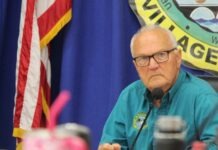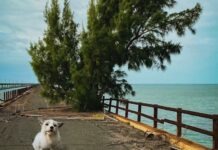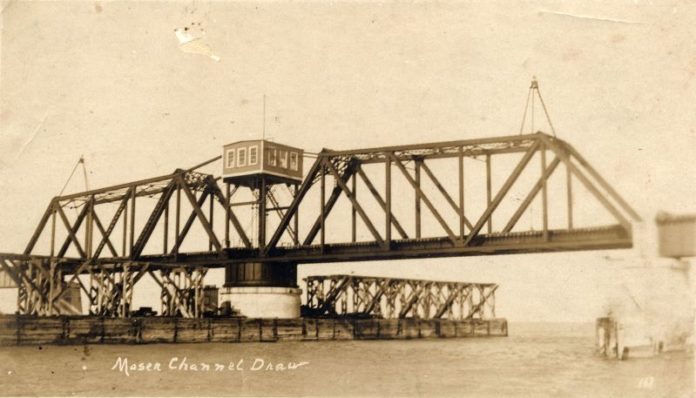The Overseas Highway is a spectacular string of asphalt and concrete and one of North America’s most scenic drives. One of the highlights of the drive is crossing the Seven Mile Bridge that connects Marathon with the Lower Keys. While the bridge is an engineering marvel worthy of appreciation, the vantage point and the unobstructed views it provides are the real treasure.
There are two Seven Mile Bridges – the railroad bridge and the modern highway bridge.
The original Seven Mile Bridge, built to accommodate the Key West Extension of the Florida East Coast Railway, was a collection of four bridges. The first three spans, Knights Key (6,803 feet), Pigeon Key (5,935 feet), and Moser Channel (13,947 feet), were built using concrete piers reinforced with three-quarter-inch steel rods. Steel girders, weighing more than 40 tons each and measuring 80 feet long, were lowered across the piers to create the foundation on which the railroad tracks were later attached. The fourth section, the Pacet Channel Viaduct (9,035 feet), used a different design – a series of concrete arches to support the tracks – hence its distinction as a viaduct.
Like the Jewfish Creek Bridge that brought the train to Key Largo, the Seven Mile Bridge incorporated a swing bridge, into the Moser Channel section to accommodate boat traffic moving between the Gulf of Mexico and the Atlantic Ocean. The bridge required a tender to remain on site to swing it open and close it again when ships needed to pass.
The bridge and the rest of Henry Flagler’s railroad became temporarily obsolete following the 1935 Labor Day Hurricane.
The Category 5 hurricane took more than 500 lives. It also destroyed 40 miles of railroad track and ended the run of Henry Flagler’s Over-Sea Railroad. As a result of the storm, the right-of-way followed by Flagler’s train was sold to the state, and, in 1937, many of the former railroad bridges were widened to accommodate automobile traffic – including the four spans of the Seven Mile Bridge. The second version of the Overseas Highway used the newly widened Seven Mile Bridge. The bridge, and the new and improved highway, opened to traffic on March 29, 1938 – July 4 marked the highway’s official reopening.
In 1981, on March 2, at 12:50 p.m. on a Monday, tragedy struck at the swing bridge. A Florida Keys Aqueduct Authority worker was driving his flatbed truck across the Seven Mile Bridge. The driver was transporting a backhoe as he approached the 253-foot-long section of swing bridge spanning Moser Channel.
The bridge tender, Peter Charles Fancher, was sitting in the small wooden office built within the steel girders supporting the bridge. Fancher, 39, was in the middle of a 12-hour shift and looking forward to retiring from his position. The clearance of the bridge was 15 feet and three inches. The backhoe secured to the truck exceeded that height, and as the truck approached the swing-bridge section, the backhoe collided with a series of steel girders before striking several large propane tanks. The resulting explosion went off like a bomb and incinerated the wooden office. Fancher, of Big Pine Key, was killed instantly.
Not long after the tragedy, the modern Seven Mile Bridge would replace the Flagler-era bridges. Construction on the new and improved automobile bridge began in 1979; it officially opened to traffic on May 24, 1982. Technically, the new Seven Mile Bridge is 35,862 feet long and 1,098 feet short of its seven-mile claim. Because the modern Seven Mile Bridge runs roughly parallel to the old railroad bridge, it gives drivers a view of the old railroad bridges that were previously unseen to passing motorists. The old railroad bridges, still erect after more than 100 years of standing in the sub-tropical elements, are the real engineering marvels.
In 1994, the old railroad bridge played a dramatic role during the filming of the Arnold Schwarzenegger and Jamie Lee Curtis thriller “True Lies.” Missiles destroyed the span that once accommodated the swing bridge at Moser Chanel in the film. The Hollywood magic trick did not really happen. What exploded was a replica, an 80-foot bridge designed to be a stunt double – kaboom! Two barges augmented the actual bridge, and fake debris submerged on either side of the gap to demonstrate the result of the explosion.
While the Seven Mile Bridge, both old and new, and the brilliant blue water views are the real attraction, a little bit of love must be saved for the Australian pine tree that has been famously growing on the Pacet Channel Bridge in the area of Mile Marker 41. Fred the Tree, as the tree is officially known, is a minor Florida Keys celebrity because it managed to dig its roots into the crumbling remains of the Pacet Channel Viaduct section of the old railroad bridge three or four decades ago and never gave up.
Even when you are not in the Keys, you can keep up with Fred the Tree on his official Facebook page – he has more than 17,000 followers. The Florida Keys are special, and the Overseas Highway can be an amazing introduction to the islands. Slow down and enjoy one of the country’s most scenic drives, especially when driving over the Seven Mile Bridge, and remember, around Mile Marker 41, to give Fred a friendly wave. The tree is doing everything it can to remind the world that anything is possible.























